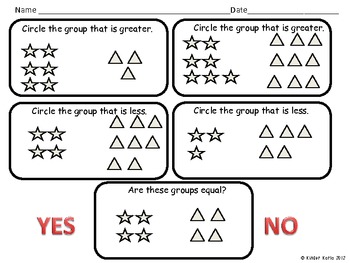

- #Greater than less than equal to assessment how to#
- #Greater than less than equal to assessment plus#
Know that every number contains the sequences of all the numbers that are smaller than the largest number in the sequence. Total embedded reversibility sequences for cardinality and ordinality of numbers.Totally embedded cardinality of numbers and hierarchical inclusion.Put them together and count the total (seven) and recognize both sequences make up the sequence of seven. Count three more (cardinality for three). Hierarchical inclusion - Count four (cardinality for four).Relationships of one to many, many to one, and many to many.Addends can be independent cardinal values and part of the sum of the two numbers.
#Greater than less than equal to assessment plus#
Smaller sequences are included in larger sequences - recognize four plus three are both included in seven.The following list identifies concepts or algorithms associated with counting and making sense of whole numbers and their relationships: There is an enormous difference in what people understand as necessary to learn to count and make sense of whole numbers. People often wrongly assume: when a person can count, they know and can use number value relationships between the numbers. Number sense based on the continuous systematic order of whole numbers.Count the number of objects in a group (set).

When people think of counting they usually think of two big ideas: Prenumber sense focuses on concepts and algorithms necessary for basic cardinality and whole number sense continues on toward the development of relationships of the values of whole numbers and information needed to develop place value, other number sense and basic operations.

Information starts with a counting overview and follows with prenumber sense and whole number sense.
#Greater than less than equal to assessment how to#
Suggestions on how children develop them, use them, and ideas on how to understand these learners to make better pedagogical decisions to facilitate the conceptualization of the ideas necessary for number literacy. This article includes concepts and processes necessary to understand whole number values and their relationships.


 0 kommentar(er)
0 kommentar(er)
